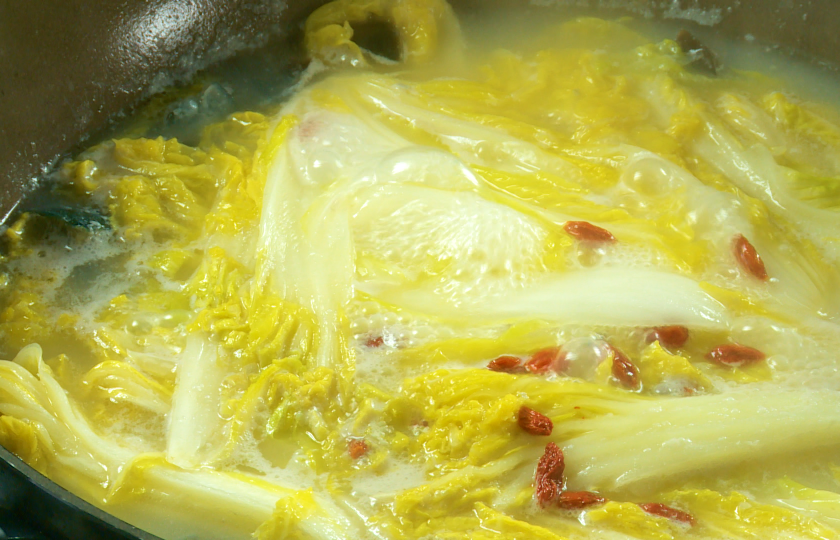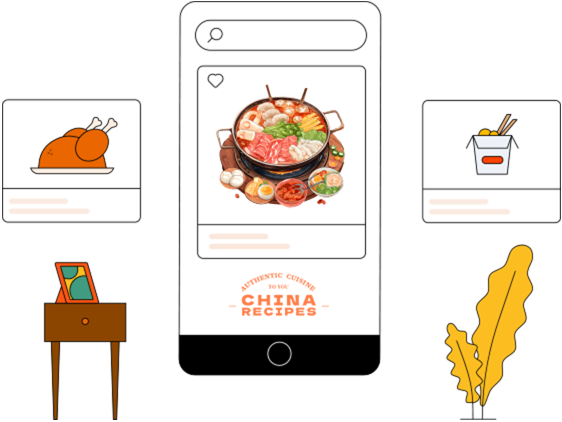Baby Cabbage in Superior Broth


Baby Cabbage in Superior Broth often leaves people with a lingering taste. The broth is rich and flavorful, while the baby cabbage remains tender and crisp. A single bite brings a warm sensation that immediately fills the heart.
What is Baby Cabbage in Superior Broth?
Baby Cabbage in Superior Broth is a light and flavorful soup dish, with baby cabbage as the main ingredient, simmered in a rich broth (usually chicken or bone broth). The preparation is relatively simple, but the seasoning from the broth enhances the dish’s natural aroma, making the soup both nourishing and delicious.
During the cooking process, additional ingredients such as garlic cloves and goji berries are often added. These small ingredients not only enhance the flavor but also add depth to the soup. After blanching, the baby cabbage is simmered in the superior broth, maintaining its natural sweetness, while the broth absorbs the richness of the cabbage, resulting in a refreshing and nutritious dish.
Unlike stir-fried or boiled dishes, the key to superior broth dishes lies in the selection of the broth and the simmering time, allowing the ingredients to fully absorb the flavor of the broth. Baby Cabbage in Superior Broth is perfect for family meals, offering both health benefits and a fresh taste that suits all kinds of people.

Ingredients Needed and Substitutions
Main Ingredients:
Baby cabbage: Provides a tender texture and is the core ingredient of the dish.
Supporting Ingredients:
Century egg: Adds a unique flavor and texture.
Garlic cloves: Enhances the aroma and adds depth.
Goji berries: Adds color and a subtle sweetness.
Seasonings:
Stock: Acts as the base broth, enhancing the overall flavor of the dish.
Salt: Used for blanching and seasoning to enhance the flavor.
Cooking oil: Used for blanching and stir-frying to prevent sticking and enhance the aroma.
Substitutes:
Baby cabbage: Can be replaced with napa cabbage, which will slightly alter the flavor.
Stock: Can be replaced with water or chicken broth, though the flavor will be less rich.
Goji berries: Can be substituted with sliced red dates for added sweetness.
What is the difference between Baby Cabbage and Napa Cabbage?
The main differences between baby cabbage and napa cabbage are in their appearance, texture, and uses.
Appearance: Baby cabbage is smaller, typically around 15-20 cm high, with tightly packed leaves, giving it a cute, compact look. Napa cabbage, on the other hand, is much larger, with loose leaves, and can grow up to 30-50 cm in height, making it noticeably bigger.
Texture: Baby cabbage is tender and crisp, with high moisture content and a refreshing texture, making it ideal for clear soups or quick stir-fries. Napa cabbage is thicker, tougher, and better suited for long simmering or hot pots, where it can absorb more of the broth's flavor.
Uses: Baby cabbage is great for stir-frying, making soups, or for cold dishes, as it maintains its natural sweetness and crispness. Napa cabbage is better suited for stews, hot pots, or pickled dishes, as it can absorb more of the soup and seasoning, resulting in a richer flavor.
How to handle Century Eggs to avoid affecting the taste with the shell?
When preparing century eggs, start by removing the shell and membrane. First, rinse the eggs under running water to clean off any dirt on the surface, then gently crack the shell and peel it away with your hands.
If the membrane is stubborn, rinse it with water to help remove any remaining parts. Be sure to leave only the egg white and yolk, as the shell and membrane can affect the texture and flavor.
INGREDIENTS
Main Ingredients
-
·500g Baby cabbage
Additional Ingredients
-
·1 Century egg
-
·4 Garlic cloves
-
·5g Goji berries
Seasonings
-
·500ml Stock
-
·5g Salt (for blanching)
-
·8g Salt (for seasoning)
-
·5ml Cooking oil (for blanching)
-
·Cooking oil (as needed for stir-frying)
Table of Contents
COOKING STEP
Step 1
Cut the baby cabbage into several pieces, dice the century egg, and peel the garlic cloves, setting them aside.

Step 2
Bring water to a boil in a pot, add 5g of salt and 5ml of cooking oil, then blanch the baby cabbage until wilted. Remove and drain.

Step 3
In the same pot, heat some oil and fry the garlic cloves until fragrant, then set aside.

Step 4
Leave a little oil in the pot, pour in 500ml of stock, add the diced century egg, and bring to a boil.

Step 5
Add the blanched baby cabbage and 8g of salt for seasoning, and bring to a boil again.

Step 6
Add the cleaned goji berries, stir well, and serve.

More recipes worth trying
Chinese Lotus Root Soup With Pork Ribs
Deliciously Nourishing Classic Choice: Fish Head Tofu Soup
Chinese Cooling Herbal Sweet Soup
Recipe Variations
Add cilantro: Sprinkle some chopped cilantro on top before serving to add a fresh touch and enhance the aroma.
Add chili: For those who enjoy spicy flavors, add some dried chili or chopped red pepper after frying the garlic, to bring a bit of heat to the dish.
Add peanuts: To increase the texture and complexity of the dish, sprinkle in some roasted peanuts for a crunchy bite.
Change the broth: If you prefer a richer broth, replace the water with a bit of chicken broth or bone broth, making the soup more flavorful.
FAQs:
Acidic ingredients can alter the texture of the century egg and make the broth cloudy, losing its original clean flavor. Strong spices can overpower the delicate taste of the baby cabbage and century egg, causing the soup to lose its intended lightness.
It's recommended to stick with the original ingredients and season the soup with just salt.
Also, make sure the soup is cooked properly: bring it to a boil on high heat, then reduce the heat to medium and simmer for 3-5 minutes to let the flavors meld. If you cook it too long, the baby cabbage will lose its fresh taste, and the soup will become too bland.
Also, when cutting the cabbage into sections, it's better to cut vertically. This helps the cabbage absorb the flavors better, and the final dish looks more uniform and appealing. Aim for pieces about 3-4 cm wide—if they are too wide, they won’t absorb the flavors well; if too narrow, they might overcook and lose texture.
When cooking with the century egg, another 1-2 minutes is sufficient, and the soup should be ready once it comes to a boil again.

















